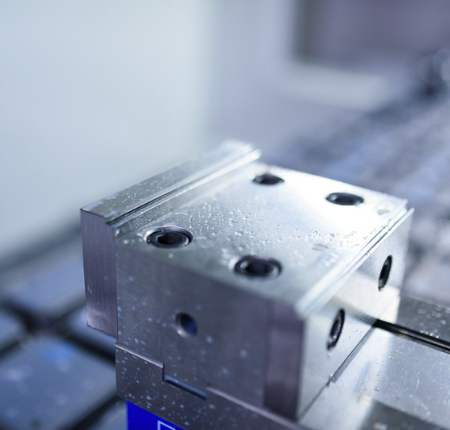Complete Guide to CNC Machining
Discover the world of CNC Machining with our comprehensive guide! Gain insights on how this technology can revolutionize manufacturing processes and create groundbreaking products.
Contents of Guide to CNC Machining
Take your CNC machining expertise to the next level – from a foundational understanding of the process to advanced techniques.

This content covers the basics of CNC Machining, including its history, overview of the process, differences between CNC machines and traditional machines, and types of CNC machines.

This topic on CNC machining tools and techniques covers cutting tools, work holding devices, programming languages, software tools, and machining techniques.

Part - 3 :Designing for CNC Machining
Designing for CNC machining includes CAD/CAM, design principles, prototyping, material selection, and assembly design.

Discover the materials and finishes that unlock complete control for CNC machining, unlocking superior accuracy and quality every time.

This topic covers CNC programming, control systems, monitoring, diagnostics, and maintenance for optimizing CNC machining operations.

This topic explores the various applications of CNC machining in automotive, aerospace, medical device manufacturing, electronics, custom and prototype fabrication, art, and jewelry.
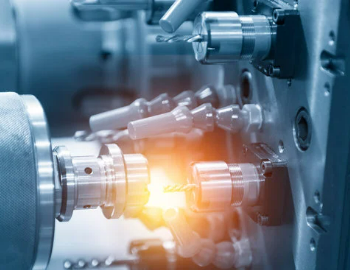
This topic discusses the latest advancements in CNC machining technology, such as 5-axis machining, multi-tasking machines, nano and micromachining, additive manufacturing, hybrid processes, and Industry 4.0.
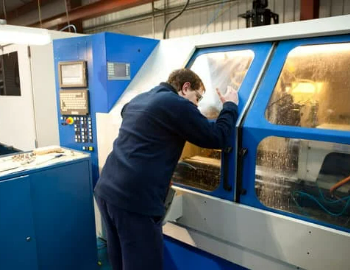
This topic covers safety and regulatory aspects of CNC machining, including machine guarding, personal protective equipment, hazard assessment, OSHA regulations, sustainability, quality control, and inspection standards.

Choosing the suitable CNC machine and service provider involves assessing your budget and business needs.
Part - 1:Basic Knowledge of CNC Machining
Learn the ins and outs of CNC machining technology – from its origins to current uses! We discuss the similarities and differences between it, traditional machines, and all types available. Discover which option is right for your project needs today with this comprehensive guide.

What is CNC machining?
• CNC Machining is a highly advanced manufacturing process that leverages computer software to control machinery.
• It enables high levels of precision and accuracy, without requiring human intervention.
• Machines can operate around the clock producing high volumes of precision components.
• CNC has become essential across various industries from aerospace to medical.
• Understanding the capabilities and potential of CNC machining is necessary for competitiveness in today’s marketplace.
History of CNC Machining
• CNC machining has been through many technological advancements since its inception in the 1940s/50s.
• Early use of machine tools and human labor was replaced with computer-numerical control systems operated by punched tape instructions.
• The industrial revolution brought about mass production, introducing new machine tools and automation systems with greater speed and accuracy.
• Modern CAD/CAM systems allow for 3D models to be converted into CNC programs and microcomputers made programming easier.
• Servo motors and feedback systems improved precision and speed, while automation and robot integration reduce errors.
• Additive manufacturing allows for complex geometries to be printed, while hybrid CNC machines combine additive and subtractive processes.


Overview of CNC Machining Process
• CNC machining is an advanced manufacturing technology that utilizes computers to control machining tools.
• It involves three stages: CAD, CAM and machine operation with setup, and inspection.
• Advantages include precision and accuracy, increased efficiency and productivity, flexibility and customization, and cost-effective manufacturing.
• Challenges include technology obsolescence, high costs of implementation, and lack of skilled personnel.
CNC Machines vs. Traditional Machines
• CNC Machines offer increased precision, accuracy, and consistency compared to traditional machines.
• Traditional machines offer greater customizability and versatility, as well as lower investment costs.
• CNC machines require more complex maintenance procedures but usually have longer lifespans than traditional machines.
• CNC machines are commonly used in aerospace, automotive, and medical equipment manufacturing; traditional machines are used in construction, metalworking, and woodworking.
• The decision of which machine to use depends on the project goals and requirements.

Types of CNC Machines
| Type of CNC Machine | Advantages | Disadvantages | Applications |
|---|---|---|---|
| CNC Lathe | Precise turning and shaping of cylindrical workpieces, reduced setup times, and increased production speed | Limited to round or cylindrical parts, may require manual setup and programming for certain operations | Manufacturing of automotive, aerospace, and medical components, as well as metalworking and prototyping |
| CNC Milling Machine | Ability to produce complex shapes and contours, high precision, and efficient material removal | Limited to 3-axis movements, may require multiple setups for complex parts, and may generate heat that can affect accuracy | Manufacturing of complex parts for aerospace, automotive, and medical industries, as well as prototyping and metalworking |
| CNC Router | Versatility in cutting various materials, high precision, and ability to produce complex shapes | Limited to 3-axis movements, slower material removal compared to other machines, and may generate dust and debris | Woodworking, signage production, prototyping, and manufacturing of plastic and composite parts |
| CNC Plasma Cutter | High-speed cutting of metal sheets and plates, efficient material removal, and ability to cut thicker materials | Limited to cutting metal, may generate heat that can affect accuracy, and requires proper ventilation and safety measures | Manufacturing of metal parts for automotive, construction, and industrial applications, as well as prototyping and metalworking |
| CNC Laser Cutter | High precision cutting and engraving of various materials, including metal, wood, and plastics, and efficient material removal | Limited to cutting thinner materials, may generate heat that can affect accuracy, and requires proper ventilation and safety measures | Manufacturing of precision parts for aerospace, medical, and electronics industries, as well as prototyping and metalworking |
| CNC EDM Machine | Ability to make precise cuts and shapes in hard materials, such as metals and ceramics, and low tool wear | Slower material removal compared to other machines, limited to certain shapes and features, and requires proper electrode selection and setup | Manufacturing of precision components for aerospace, medical, and automotive industries, as well as prototyping and toolmaking |
| CNC Water Jet Cutter | Ability to cut a wide range of materials, including metal, stone, and glass, and high precision cutting and efficient material removal | Limited to cutting thinner materials, slower material removal compared to other machines, and requires proper water filtration and disposal | Manufacturing of complex parts for aerospace, automotive, and medical industries, as well as prototyping and metalworking |
| CNC Wire Bender | Ability to bend wire and tubing to precise shapes and angles, and high accuracy and repeatability | Limited to certain wire and tubing sizes and shapes, may require manual setup and programming for certain operations, and slower compared to other machines | Manufacturing of custom wire and tubing parts for automotive, aerospace, and medical industries, as well as prototyping and metalworking |
| CNC 3D Printer | Ability to produce complex 3D objects from digital designs using various materials, and high precision and accuracy | Limited to certain materials and sizes, slower compared to other machines, and requires proper maintenance and calibration | Prototyping, product development, and manufacturing of custom parts for various industries, including aerospace, automotive, and medical |
Part - 2: CNC Machining Tools And Techniques
Professional CNC machining unlocks the potential of manufacturing for even more incredible results. This topic dives into various issues, from cutting tools to programming languages and software systems – arming operators with knowledge on how best to use these tools to achieve optimal efficiency and accuracy when producing components.

Best Practices for Cutting Tool Selection in CNC Machining
• Understanding the material being cut is essential when selecting cutting tools for CNC machining.
• Consider the cutting speed, feed rate, and tool geometry to maximize performance and efficiency.
• Coatings can extend the life of the tool and improve its performance.
• Cutting tool materials such as carbide, steel, ceramic, and diamond vary in hardness, wear resistance, and cost.
• Following best practices helps achieve consistent machining results while improving productivity and reducing downtime.
Types of Cutting Tools
| Type of Cutting Tool | Advantages | Disadvantages | Applications |
|---|---|---|---|
| End Mill | Ability to produce complex shapes and contours, efficient material removal, and long tool life | Limited to cutting in one direction, and may require multiple tools for certain operations | Milling of complex parts for aerospace, automotive, and medical industries, as well as prototyping and metalworking |
| Drill Bit | Efficient removal of material, ability to drill holes of various sizes, and long tool life | Limited to drilling straight holes, and may generate heat and vibration that can affect accuracy | Drilling of holes in metal, wood, and plastics for various industries, as well as prototyping |
| Turning Tool | Ability to produce precise and smooth surfaces on cylindrical workpieces, and efficient material removal | Limited to turning and shaping round parts, and may require frequent tool changes for different operations | Manufacturing of automotive, aerospace, and medical components, as well as metalworking and prototyping |
| Boring Tool | Ability to produce precise and accurate holes, and efficient material removal | Limited to boring straight holes, and may require specialized equipment for certain operations | Manufacturing of precision parts for aerospace, medical, and automotive industries, as well as prototyping |
| Reamer | Ability to produce precise and accurate holes, and smooth and straight surfaces | Limited to finishing and sizing already drilled holes, and may require frequent tool changes for different hole sizes | Manufacturing of precision parts for aerospace, medical, and automotive industries, as well as prototyping |
| Taps and Dies | Ability to produce internal or external threads on various materials, and long tool life | Limited to producing specific thread sizes and types, and may require specialized equipment for certain operations | Manufacturing of threaded components for aerospace, automotive, and medical industries, as well as prototyping |
| Broach | Ability to produce precise and accurate internal shapes and contours, and efficient material removal | Limited to certain shapes and sizes, and may require specialized equipment for certain operations | Manufacturing of precision components for aerospace, medical, and automotive industries, as well as prototyping |
| Saw Blade | Efficient material removal, ability to cut various materials, and long tool life | Limited to cutting in a straight line, and may generate heat and vibration that can affect accuracy | Cutting of metal, wood, and plastics for various industries, as well as prototyping |
An Overview of Popular Workholding Devices Used in CNC Machining Operations
• Clamping devices are essential tools to secure workpieces during machining and welding operations.
• Types of clamping devices include manual clamps, power clamps, hydraulic clamps, pneumatic clamps, and magnetic clamps.
• Advantages of using clamping devices include a stable grip on the workpiece, versatility, and increased efficiency and safety.
• Disadvantages of using them include the risk of over-tightening, causing deformation or slippage of the workpiece.
• Examples are C-clamps, F-clamps, bar clamps, parallel clamps, and toggle clamps.


The Evolution of CNC Programming Languages and Their Impact on Machining
• CNC programming, utilizing G-Code, has revolutionized the manufacturing industry, allowing for precision and efficiency in production processes.
• G-Code consists of alphanumeric commands instructing the machine on positioning and movement and other specific parameters.
• The development of G-Code dates back to the 1950s with the introduction of Numerical Control (NC) machines. Early versions were written on punched cards or paper tape; modern iterations are more complex and provide greater control over machine functions.
• G-Code provides a standardized language for CNC machines, allowing engineers and manufacturers to replicate complex designs with high precision and accuracy; it has also enabled mass production on a large scale with reduced time and cost of product development.
• Advancements in G-Code have led to new applications such as 3D printing, enabling customized designs with greater accuracy and speed. Additional advancements in software and programming languages have also improved design functions and reduced errors/waste.
• The impact of G-Code on machining is undeniable: improved precision/accuracy, increased efficiency/productivity, significantly lower costs, and reduced waste have all been attributed to this technology.
The Introduction of CAM Software: Revolutionizing the Machining Industry
• CAM software is a digital system that automates machining, increasing efficiency and reducing errors.
• It has been in use since the 1950s and was initially only available to large companies due to its cost.
• CAM software is vital in manufacturing as it enables intricate shapes to be machined accurately and consistently.
• There are two main categories of CAM software: 2D and 3D, while standard features include custom tool libraries, multi-axis milling, and nesting.
• G-code and M-code are the two most common programming languages used, although they have advantages and disadvantages.
• The use of CAM software has resulted in increased efficiency, reduced errors, lowered manufacturing costs, and improved capacity for customization.
• Future advancements such as cloud computing and IoT have the potential to revolutionize the industry further.


Top strategies for optimizing CNC machining processes
• Streamline the design and programming process using CAD/CAM software, establishing standard procedures, and training operators.
• Optimize tooling and cutting parameters by selecting high-quality tools and adapting them to the material being machined.
• Improve work holding and machine setup by selecting solutions tailored to the part’s shape and size, as well as optimizing machine setup with accurate measurements.
• Monitor and analyze production metrics such as machine utilization, downtime, tool life, cycle times, etc.
• Implement continuous improvement processes through regular process audits, collaborating with vendors/suppliers, and encouraging operator feedback/involvement.
Part - 3 :Designing For CNC Machining
CNC machining requires precise engineering of every step—from CAD/CAM design and prototyping to material selection and assembly. Skilful execution ensures optimal results, while a deep understanding of principles is essential for success.
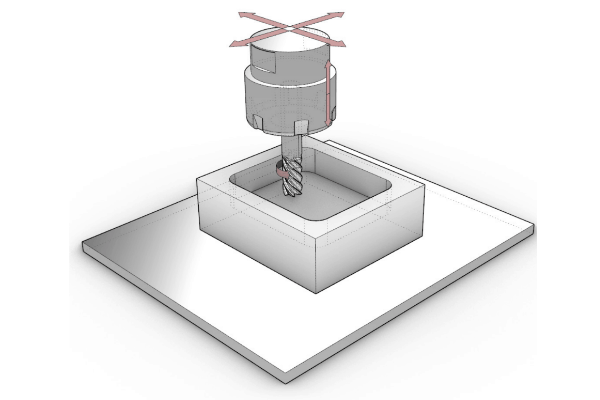
Design Principles for CNC Machining
• CNC machining has become a standard in the manufacturing industry, but to maximize its benefits, design principles must be followed.
• Design for manufacturability ensures adherence to machine limitations and minimizes waste and costs.
• Material selection should be based on machinability, strength, thermal expansion, and heat resistance.
• Geometric accuracy must be ensured through understanding geometric constraints, controlling tolerances, and configuring controllable features.
• Following these design principles leads to improved quality control and cost savings through minimized waste and rework, higher yields, and increased profitability.
Prototype Testing and Analysis
• Prototype testing is essential in the design process to identify errors and obtain feedback for refinements.
• Functional, structural, and material testing are all used to assess parts and components.
• Software simulation, physical testing, and failure analysis are the tools and methodologies employed for prototype testing and analysis.
• CNC machining and prototype testing/analysis help designers create parts that meet performance requirements.

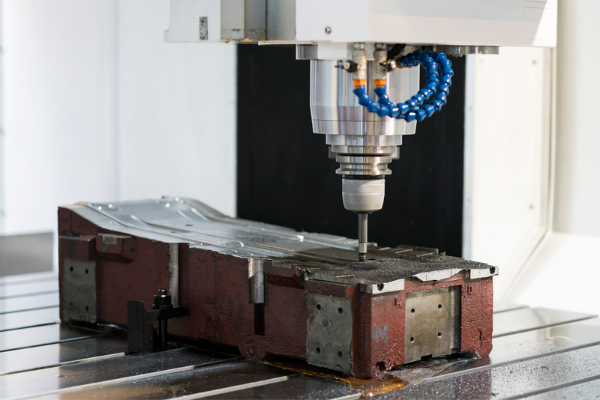
Machinability and Material Selection
• Machinability in CNC machining is a critical aspect of part production, referring to the ease with which a material can be cut, processed, or shaped without damage.
• Various factors like material properties, tool geometry, and cutting parameters affect the machinability of a material.
• Selecting the suitable material for machining involves evaluating multiple factors, including mechanical properties, cost, availability, and machinability.
• Good machinability leads to more efficient, cost-effective machining and improved workpiece quality.
Design for Assembly and Part Consolidation
• Design for Assembly (DFA) is a design methodology to simplify the assembly process of a product by reducing the number of parts and minimalizing the need for special tools or skills.
• DFA in CNC machining offers many benefits, such as reduced cycle times, improved quality, and lower costs.
• Part consolidation involves combining multiple parts into one part without affecting functionality; it also offers several benefits such as decreased assembly time, reduced inventory, and improved structural integrity.
• Guidelines for successful implementation of DFA and part consolidation include understanding product requirements, evaluating design options, and choosing efficient machining methods.
• Various tools and software are available to assist with DFA and part consolidation, such as SolidWorks and PTC Creo.
• Case studies demonstrate successful DFA and part consolidation applications in the aerospace, medical device, and automotive industries.
• Through DFA and part consolidation in CNC machining processes, manufacturers can improve competitiveness and increase profitability.

Part - 4 :Materials For CNC Machining
Unlock precision and quality with CNC machining. Achieve complete control by exploring materials and finishes to meet every need.

Overview: Materials for CNC machining
Choosing the appropriate material is a pivotal stage during the design phase. Your usage and specifications are significant in identifying the most suitable material option.
CNC technology provides a wide variety of materials to select from, as nearly all materials with adequate hardness can be processed. This section will mainly focus on metals and plastics, which are highly relevant to engineering applications.
Surface finishes can modify the characteristics of CNC-manufactured components, and we shall explore them in the following section.
listing various materials used in CNC machining
| Material | Advantages | Disadvantages | Common Grades | Applications |
|---|---|---|---|---|
| Aluminum | Lightweight, excellent machinability, corrosion-resistant, and good thermal and electrical conductivity | Relatively low strength and hardness compared to other metals | 6061, 7075, 2024, 6063 | Aerospace, automotive, and electronics industries, as well as prototyping |
| Steel | High strength, hardness, and wear resistance, as well as good machinability | Relatively difficult to machine and may require specialized tools | 1018, 1045, A36, 4140 | Automotive, aerospace, and construction industries, as well as prototyping |
| Stainless Steel | Corrosion-resistant, high strength, and hardness, as well as good machinability | Relatively difficult to machine and may require specialized tools, and may be more expensive compared to other metals | 304, 316, 17-4PH, 440C | Medical, food processing, and chemical industries, as well as prototyping |
| Titanium | High strength-to-weight ratio, excellent corrosion resistance, and biocompatibility, as well as good machinability | Relatively difficult to machine and may require specialized tools, and may be more expensive compared to other metals | Grade 5 (Ti-6Al-4V), Grade 2 (commercially pure) | Aerospace, medical, and defense industries, as well as prototyping |
| Copper | Excellent electrical and thermal conductivity, corrosion-resistant, and good machinability | Relatively soft and may be prone to galling during machining | C101, C110, C360 | Electrical and electronics industries, as well as prototyping |
| Brass | Excellent electrical and thermal conductivity, corrosion-resistant, and good machinability | Relatively soft and may be prone to galling during machining, and may be more expensive compared to other metals | C260, C360, C464 | Plumbing, hardware, and musical instrument industries, as well as prototyping |
| Plastics | Lightweight, excellent machinability, versatile, and good chemical resistance | Relatively low strength and stiffness compared to metals, and may be prone to thermal deformation during machining | Acetal, nylon, polycarbonate, PVC | Automotive, medical, and consumer goods industries, as well as prototyping |
| Composites | High strength-to-weight ratio, excellent fatigue resistance, corrosion-resistant, and good thermal and electrical conductivity | Relatively difficult to machine and may require specialized tools, and may be more expensive compared to other materials | Carbon fiber, fiberglass, Kevlar | Aerospace, automotive, and sports equipment industries, as well as prototyping |
Metals
CNC machining is an ideal manufacturing solution for custom parts, prototypes, and low-to-medium batch production requirements – thanks to its versatility with metal alloys. Of the many possibilities available, aluminum 6061 is a popular choice among design engineers.
